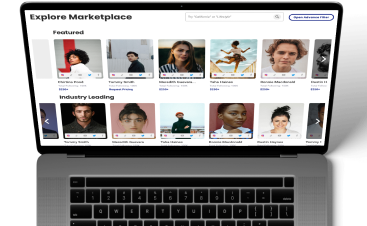In today’s fiercely competitive markets, businesses constantly seek novel approaches to gain visibility, foster innovation, and increase sales. One such approach is through brand collaborations. By entering into strategic partnerships with other brands, businesses can unlock new opportunities, amplify their message, and reach a broader audience. But what exactly does a successful brand collaboration look like, and how can a business make the most of it?
Brand synergy is the backbone of any successful collaboration. This concept is about combining strengths, aligning values, and creating a unified mission that resonates with your target audience. These collaborations can take many forms, from joint ventures where two brands develop a new product to collaborative marketing initiatives that see brands promoting one another’s offerings to their separate audiences. Ultimately, any brand collaboration aims to create a partnership that is equally beneficial and profitable for all parties involved.
Key Takeaways
- Brand collaborations can unlock new opportunities and expand market reach
- Strategic partnerships are about combining strengths and aligning values
- Brand synergy is a crucial component of successful collaborations
- Collaborations can take many forms, including joint ventures and collaborative marketing
- The goal of any partnership is to create a mutually beneficial relationship
The Power of Partnering Up: Exploring Brand Collaborations
Establishing brand collaborations has proven to be an ingenious strategy for businesses aiming to gain a collaborative advantage. In a rapidly evolving and competitive business ecosystem, it becomes crucial for brands to make strategic moves that can boost their growth trajectory while instilling robustness within their operations.
When brands join forces, they open doors to numerous partnership benefits. These benefits range from accessing new customer segments through effective cross-promotion strategies to sharing resources to achieve mutual growth. This helps consolidate a brand’s standing in the market and paves the way for significant market expansion.
“An intelligent partnership can be a compelling way to build a business. It provides a quick path to scale, offers validation, and opens up further opportunities.
Understanding the dynamics that lead to successful collaborations is fundamental to leveraging optimum partnership benefits. Let’s explore critical aspects that underscore the success of brand collaborations.
- Shared Vision: This forms the cornerstone of any successful collaboration. Both brands must align their visions and goals to create an effective collaboration strategy that transcends individual success.
- Resource Exchange: Collaborations provide an opportunity for resource pooling, which allows brands to leverage each other’s strengths. Whether technology, infrastructure, or human resources, sharing assets leads to cost savings and increased output.
- Brand Visibility: A strategic partnership exposes brands to new target audiences, increasing brand visibility. A classic example is the cross-promotion of products or services, where both brands tap into each other’s customer bases.
- Market Expansion: Collaborations are an effective antidote to market saturation. They allow brands to penetrate new markets and customer segments by presenting a novel, joint value proposition.
| Parameter | Description |
| Shared Vision | A mutual understanding of goals and objectives. |
| Resource Exchange | Sharing of relevant resources, leading to cost savings and increased output. |
| Brand Visibility | Increased exposure and reach through each other’s customer base. |
| Market Expansion | Access to new markets and customer segments provided by the partner brand. |
As this discussion reveals, the power of partnering up holds immense potential for brands looking to up their game in a highly competitive landscape. Businesses can capitalize on beneficial outcomes beyond individual achievements by harnessing their complementary strengths via collaborative marketing. This dynamic, symbiotic relationship underpins the true essence of the phrase ‘the whole is greater than the sum of its parts.’
Reaping the Rewards: The Benefits of Brand Collaborations
When two brands come together, their combined efforts can create robust audience engagement and enable compelling brand storytelling. This cooperative approach offers unparalleled opportunities for market reach and ensures that your brand maintains a competitive edge.
Through cooperative marketing, brands can share resources, co-create products, or simply foster a sense of community through shared values or interests, subsequently carving out a unique market space. In this sense, brand collaborations represent an invaluable strategy for innovatively engaging with audiences.
| Brand Collaboration | Benefit |
| Nike and Apple | Boosted audience engagement by creating a seamless integration between technology and fitness. |
| H&M and Alexander Wang | Achieved global recognition and attracted new fashion-forward consumers, strengthening the position of both brands. |
| Uber and Spotify | Promoted enhanced consumer experience by personalizing and elevating everyday travel. |
This table showcases just a few brilliant examples of brand collaborations that have successfully amplified engagement and pushed the boundaries of traditional marketing.
Collaborative, solid partnerships can lead to an array of benefits, from improved social engagement and audience growth to the generation of brand loyalty and increased revenue. More importantly, collaborations allow brands to tell captivating, multi-dimensional stories that resonate more deeply with today’s consumers.
“A brand is no longer what we tell the consumer it is—it is what consumers tell each other it is.” – Scott Cook.
This encapsulates the transformative power of brand collaborations. In the modern marketing landscape, your audience’s collective voice forms your brand’s narrative – and collaborations can help align and amplify these narratives spectacularly.
Finding Your Perfect Match: Identifying Suitable Partners for Brand Collaborations
When setting sail on the vast seas of brand collaborations, knowing who to partner with is as important as why you’re partnering. The partnership criteria, strategic alignment, audience insights, and collaboration outreach form the foundation for building strong, mutually beneficial collaborations. Let’s explore these components in more detail.
Criteria for Selecting Brand Partners
Choosing the right partner begins with setting clear partnership criteria. Consider factors such as shared values, objectives, and market focus. The potential partner’s brand image and reputation, customer relationship strategies, and experiences in past collaborations are also crucial.
- Shared values and objectives: Aligning in terms of business ethics, social responsibility, and long-term aims is crucial for maintaining a collaboration’s integrity and achieving joint goals.
- Brand image and reputation: Partnering with highly reputable brands with a positive image can enhance your brand’s credibility and recognition.
- Past collaboration experiences: A partner’s history in handling collaborations can provide insight into their approach and dedication to joint ventures.
How to Approach Potential Brand Partners
Once you have identified potential partners based on your criteria, initiating collaboration outreach is time. Start by developing a tailored proposal that outlines why this partnership could benefit both parties. The proposal should also highlight the aspects of a shared audience and how the collaboration will leverage these associations for mutual benefit. Remember, the best approaches feel personal, relevant, and forward-thinking.
Evaluating Brand Alignment and Audience Overlap
Before finalizing a deal, ensure that both brands are highly aligned strategically. This involves comparing mission statements, brand values, target demographics, and marketing styles for similarity or complementarity.
Analysis of audience insights can reveal how much overlap exists between the brands’ audience groups. Significant overlap ensures that the collaborative efforts resonate with a large segment of your existing patrons, thus optimizing return on investment.
| Brand Alignment Factors | Audience Overlap Parameters |
| Mission statements | Age range |
| Brand values | Buying habits |
| Target demographics | Consumer interests |
| Marketing styles | Online behavior |
In conclusion, considering various factors requires finding the perfect match for a brand collaboration. From setting partnership criteria to strategic outreach, every step in the process plays an essential role in shaping the outcome of the partnership.
Beyond the Handshake: Structuring the Collaboration for Success
When embarking on a strategic partnership, the initial handshake is merely the beginning. Understanding how to structure your collaboration for success is of utmost importance. A concrete collaborative agreement forms the cornerstone of this structure, laying down essential terms and conditions that govern the partnership. But what lies beyond the agreement? How can you ensure your partnered venture is planned and executed for maximum success?
The clearly defined joint goals are crucial in planning any joint venture. A well-articulated, shared vision for the collaboration ensures that both parties are working towards the same objective. Once these joint goals are established, they serve as a compass, directing all cooperative action and energy in the desired direction.
Venture planning goes hand in hand with setting joint goals. Detailed, thoughtful planning mitigates potential pitfalls, optimally utilizes resources, and cultivates a synergy that may only exist with careful coordination. Such planning includes outlining the process flow, setting timelines, and allocating responsibilities according to each partner’s strengths.
At the heart of every successful collaboration lies a robust partnership framework. This framework outlines the mechanics and dynamics of the partnership, going beyond just the roles and responsibilities. It provides a structure for critical areas such as decision-making processes, revenue sharing, conflict resolution methods, and communication channels.
“In a partnership framework, always clarify ‘who’s on first and what’s on second?’ Otherwise, the partnership is all but certain to fail.”
As you embark on your collaborative journey, keep these principles in mind. The initial handshake may be a powerful symbol of your commitment to work together. Still, the success of the collaboration truly lies in meticulous planning, well-defined goals, and a comprehensive partnership framework. While every collaboration is unique, these guidelines will ensure you put your collaborative efforts on a solid foundation for success.
Crafting the Blueprint: Creating a Campaign Strategy for Your Brand Collaboration
In this sixth segment of our in-depth exploration of successful brand collaborations, we shall shed light on formulating a robust campaign strategy that underscores your collaboration’s objectives. Two paramount components prime your strategy for accomplishment – an outcome-centered approach pivoted on clear goals and corresponding Key Performance Indicators (KPIs) and harnessing creative marketing tactics for heightened user interaction. Moreover, we delve into performance analytics, a crucial determinant of campaign efficacy.
-
Setting Clear Objectives and KPIs
Designing your brand collaboration begins with outlining your collective campaign objectives. By understanding what you’re trying to achieve through your cooperation, you can establish how you’ll gauge success. Developing KPIs that correlate to your goals provides a quantitative way to track your campaign’s progress and make adjustments as necessary.
-
Marketing Tactics for Maximum Engagement
Once your collaboration’s direction is clarified, it’s time to contemplate your engagement strategies. The choices are innumerable, from leveraging social media platforms to host interactive online activities and conducting insightful webinars to crafting compelling content. The key is identifying which tactic will resonate most with your target audience while achieving your campaign objectives.
-
Measuring Campaign Performance
As your collaboration gains momentum, it’s crucial to monitor its performance. Comprehensive performance analytics can accomplish this. Your KPIs act as a touchstone in this process, offering tangible evidence of your marketing efforts’ strengths and opportunities for improvement.
Remember, behind every successful brand collaboration lies a well-structured strategy, intelligent market engagement, and diligent performance analysis. Harness these elements to pave your collaboration’s path to success.
| Campaign Phases | Objectives | Marketing Tactics | Performance Indicators |
| Initiation | Establish brand unity and shared goals | Joint brand announcements, Social media buzz creation | Social media engagement, Media coverage |
| Execution | Boost brand recognition, Foster customer engagement | Cross-promotion, Special events | Website traffic, Event Attendance |
| Evaluation | Measure campaign performance, Identify areas for improvement | Customer feedback surveys, In-depth analytics | KPI achievement, Customer feedback |
Amplifying Your Reach: Leveraging Social Media and Influencers in Brand Collaborations
In the age of digitization, mastering a strategic social media strategy is a vital component of successful brand collaborations. These popular platforms can dramatically augment your digital outreach and fortify your online brand presence. Let’s delve into the nuances of using social media and influencers for brand collaboration.
Creating a cohesive social media strategy involves selecting the right platforms for your brand voice and audience, creating engaging content, and monitoring metrics for performance enhancement. Incorporating influencers into this strategy can be particularly powerful. Their established relationship with followers brings authenticity to your brand, fostering trust and driving engagement.
Influencer partnerships are taking center stage in modern marketing, offering a refreshing alternative to traditional marketing approaches. Influencers lend their voice and trust to your brand, extending your reach to engaged followers. The proper influencer collaboration can boost brand visibility and affinity, effortlessly enhancing your market presence.
“Influencer partnerships can dramatically bolster your brand’s digital footprint and create a deeper connection with audiences, setting them apart from traditional marketing methods. Authenticity reigns supreme in influencer marketing, making it pivotal to meticulously select influencers whose values and personalities align with your brand.”
Bolstering your brand’s Social Media strategy entails:
- Strategically choosing social media platforms matching your brand’s identity and audience.
- Producing creative and compelling content to boost user engagement and shareability.
- Using social media analytics to refine the strategy based on data-driven insights continually.
Influencer partnerships prosper by:
- Connecting with influencers who genuinely align with your brand and business values.
- Developing strong working relationships with influencers based on mutual respect and clear communication.
- Measuring the success of influencer partnerships using reliable metrics for a granular understanding of their performance.
| Social Media Strategy | Influencer Partnerships |
| Choose platforms that resonate with the brand and audience | Establish connections with influencers who align with the brand |
| Create engaging content to enhance shareability | Develop mutually beneficial relationships with influencers |
| Refine the strategy using analytics | Measure partnership success using accurate metrics |
The potent combination of a robust social media strategy and well-aligned influencer partnerships can significantly bolster your brand’s online presence and reach. The key lies in establishing authentic connections, creating resonant content, and effectively monitoring and refining your approach based on insightful metrics.
Learning from Success: Miss Rachel YouTube Case Study
One prime example of a successful brand collaboration is the case study of the Miss Rachel YouTube channel. This partnership has demonstrated how influencer success can generate mutual benefits for the influencer’s individual persona and the collaborating brand.
By breaking down the elements of this specific brand partnership example, we can glean key insights and lessons that can be effectively applied to other collaboration strategies. The following analysis will delve into the specifics of this partnership, shedding light on the factors that contributed to its triumph.
- A clear understanding of the audience: The success of this collaboration was built upon a thorough knowledge of the audience that both parties catered to. There was a shared audience interest, which amplified the collaboration’s impact.
- Authentic integration: Secondly, the brand was seamlessly integrated into Miss Rachel’s content. This authentic integration resonated well with the audience, fostering a genuine connection that fueled engagement and conversion.
- Continuous monitoring and adjustment: Lastly, the partnership’s success was secured by consistently tracking progress and prompt adjustments. By closely monitoring the collaboration’s impact, the brand and Miss Rachel could adapt and optimize for better results.
Remember, the beauty of influencer collaborations lies in their potential to yield seemingly organic content that audiences can relate to and trust. Grasping this essential element can catapult your brand collaborations to unprecedented heights.
Sweating for Success: The Role of Fitness Influencers in Brand Collaborations
In the health and wellness marketing world, the role of fitness influencers has been paramount. They don’t just inspire us to maintain an active lifestyle but also effectively promote active lifestyle branding.
As catalysts in consumer perception, fitness influencers significantly impact industry trends and brand recognition. Their authentic, relatable content and dynamic engagement strategies foster strong connections with their audience. So, when these fitness personalities collaborate with a brand, they bring along their dedicated followers, driving substantial traffic towards the brand.
In influencer marketing, the relatability and authenticity of the influencer are correlated with brand loyalty and customer conversions.
Coupled with their expert fitness and health knowledge, influencers can provide invaluable guidance on product usage, demonstrating its efficiency and believability. Their influence is such that their endorsement can escalate products from obscurity to the spotlight, thus drawing significant advantages to any brand they associate with.
- Their reach can span from a few hundred thousand to millions, and they instill trust in the audience through their rigorous fitness routines, which showcase the product or service.
- They can generate buzz around a product by featuring it in their workouts or nutritional plans.
- With their dedicated following, influencers serve as a trust bridge between a brand and potential customers, often driving higher conversion rates.
The magic lies in the fitness influencers’ ability to incorporate the product or service into their content seamlessly. This makes for nonintrusive marketing that increases brand familiarity without the audience feeling overwhelmed by sales pitches. Collaborations with fitness influencers thus prove to be a dynamic, win-win opportunity for both brands and influencers, reinforcing the significance of these partnerships in modern health and wellness marketing.
Protecting Your Interests: Legal and Ethical Considerations in Brand Collaborations
Ensuring a fair and ethically sound deal for all parties involved is crucial in collaborations. This consists of navigating vital legal documents and agreements, comprehending intellectual property rights, and being committed to ethical marketing strategies that involve transparent disclosure. In this section, we will fully address these aspects.
-
Navigating Contracts and Agreements
One of the initial and fundamental steps in securing a successful collaboration is understanding, reviewing, and solidifying the legal agreements that underpin it. These contracts should clearly state each party’s roles, responsibilities, and expectations. It is recommended that expert legal counsel review these agreements to ensure all potential risks are mitigated, thereby safeguarding your interests.
-
Understanding Intellectual Property Rights
Creating shared marketing ventures often creates new content that could be classified as intellectual property. Understanding who owns what, who has the right to use which parts, and how revenues should be split in case of joint intellectual property is critical to avoid disputes. Educating yourself about how intellectual property rights impact your collaboration ensures smooth operations.
-
Maintaining Transparency and Disclosure
As a part of the ethical marketing practice, it is essential to maintain transparency with all stakeholders, including customers, partners, and regulators. This includes being clear about sponsored content, brand partnerships, or any other arrangement that might affect the consumer’s perception or choices. Withstanding the trust of your audience and adhering to all regulations by keeping a transparent disclosure can further enhance your brand’s reputation and recognition.
To summarize:
| Consideration | Description | Benefit |
| Legal Agreements | Understanding and solidifying contracts outlining critical aspects of the collaboration deal | Clear expectations, reduced risks |
| Intellectual Property | Comprehending shared IP rights and revenue divisions | Avoidance of potential disputes, smooth operations |
| Transparent Disclosure | Maintaining transparency about sponsored content, partnerships | Trust building, adherence to regulations, brand enhancement |
Proactively considering these legal and ethical aspects is pivotal to cultivating fruitful and fair collaborations. Fair legal agreements, clear intellectual property guidelines, and a commitment to ethical marketing through transparent disclosures will help protect your brand’s interests and foster long-lasting partnerships built on trust and shared success.
Conclusion
Our journey through brand collaborations comes to a close, and we find ourselves back at the start, enriched with a deeper understanding of its immense potential. These strategic partnerships exemplify the essence of collaborative innovation – a unity of purpose that melds together the strengths of diverse entities to create a formidable entity. By leveraging the power of joint ventures, co-branding endeavors, and cross-promotion, you can drive brand growth, unlock new customer bases, and elevate your business to new heights.
A closer look into successful collaborations shows that the shared growth stems from a practical partnership framework and a carefully orchestrated campaign strategy. From setting clear KPIs and measurable goals to leveraging social media and influencers, the road to a successful collaboration involves meticulous planning, a thoughtful approach, and continuous performance analytics.
While collaboration strategies and dynamics vary, they share a common thread of synergy and cooperative spirit. Whether it’s a fitness influencer reshaping perceptions in the health and wellness industry or an innovative influencer like Miss Rachel amplifying a brand’s presence on YouTube, collaborations harness the power of partnerships to achieve extraordinary results. To make it work for your brand, you must identify suitable partners, maintain transparency in your operations, and uphold ethical marketing practices, always keeping legality in check.
In this competitive ecosystem where unfamiliar territories need exploration, stepping into the world of brand collaborations might be your business’s strategic move for remarkable success. Remember, successful partnerships and creative collaborations paved the path to innovation. As the curtain falls on this guide, we hope it has inspired you to consider and embrace the power of synergy in your business strategies.
FAQ
a) Why are brand collaborations impactful for businesses today?
Brand collaborations allow businesses to create win-win scenarios, foster innovation, and broaden their market reach. They contribute to brand synergy and allow for joint ventures and co-branding activities that can enhance brand visibility.
b) What advantages do brand collaborations bring to the table?
Brand collaborations offer numerous benefits. They can lead to new customer segments through cross-promotion, resource sharing for mutual growth, increased brand visibility, and shared success through a collaborative advantage. They contribute significantly to market expansion.
c) How do brand collaborations enhance audience engagement and storytelling?
Brand collaborations present opportunities for heightened audience engagement and engaging brand storytelling. They can also provide a competitive edge and facilitate innovative cooperative marketing strategies.
d) What criteria should be considered when identifying suitable partners for brand collaborations?
Critical criteria for identifying suitable brand collaborations are shared values and objectives, strategic alignment, and audience overlap. Effectively approaching potential partners and assessing brand alignment using data-driven audience insights also play crucial roles.
e) How can the success of a brand collaboration be ensured?
Success in brand collaborations is achieved through precise venture planning, setting joint goals, developing a robust partnership framework, and crafting an effective campaign strategy. This ensures both parties are on the same page and aligns the collaboration’s direction.
f) How do we leverage social media and influencers in brand collaborations?
Social media and influencers can be effectively leveraged in brand collaborations through a well-planned social media strategy and the right influencer partnerships. This enhances digital outreach and strengthens the online brand presence.
g) What is the role of fitness influencers in brand collaborations?
Fitness influencers are crucial in brand collaborations within the health and wellness market. They shape consumer perceptions, promote active lifestyle branding, and highly impact brand loyalty and customer conversions.
h) What are the legal and ethical considerations in brand collaborations?
Brands need to navigate complex contracts and agreements, understand the intricacies of intellectual property rights during shared marketing ventures, and emphasize ethical marketing practices, including transparent disclosure, to maintain public trust and comply with regulations.





